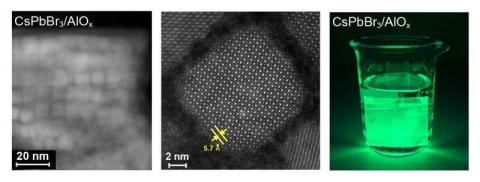EPFL researchers have designed a new type of inorganic nanocomposite that makes perovskite quantum dots (nanometer-sized semiconducting materials with unique optical properties) exceptionally stable against exposure to air, sunlight, heat, and water.

Quantum dots made from perovskites have already been shown to hold potential for solar panels, LEDs and laser technologies. However, perovskite quantum dots have major issues with stability when exposed to air, heat, light, and water. The EPFL team has now succeeded in building perovskite quantum dot films with a technique that helps them overcome these weaknesses.
The team used an array of characterization techniques to monitor the nucleation and growth process of the alumina matrix on the quantum dot surface. The process showed that the interaction between the ALD precursor and the dot surface is crucial in order to uniformly coat the dots while preserving their optoelectronic properties.
"By addressing the stability challenge of perovskite quantum dots, this work is expected to greatly impact the field by enabling fundamental optoelectronic studies, which require the samples to be stable during the measurements, in addition to increase the durability of devices based on this new class of quantum dots," say the authors.

